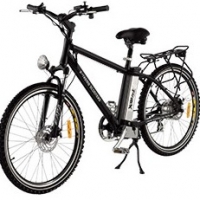
Riding your Electric Bike; Do’s and Don’ts
So you’re considering buying an electric bicycle. Great idea. These things are fantastic as they give you that wonderful feeling of being outdoors and exercising on your bicycle without the dread of hills. But there are a few things to consider before buying one, and a few more things to consider when riding one.
When buying one, my recommendation would be not to simply go for the cheapest as, like most things, you get what you pay for. Read up on the features first A few things to look for would be: Battery. What kind does it use? (Lithium-ion is much better than lead acid). Where is the battery situated? (In my opinion, the lower it sits in the frame the better as it has less effect on your centre of gravity than one that is perched high on a luggage rack). Brakes.What sort does it have? I have found disk brakes to be far superior, especially on an electric mountain bike. I like to go off road and the wheel rims often get wet when riding through puddles. This may affect braking with block rim brakes as they grab onto the rims to slow you down. On-board features; Does it have a battery indicator to let you know how much charge your battery is holding before you set off? Does it have multiple power options? Just to give you an idea, mine has three settings, those being; *Completely off, so that I am riding it as a normal bike; *Power assist, where the power kicks in after a couple of revolutions of the pedals and then remains on as long as the pedals are turning, (there is a high and low setting in this mode). *Power on Demand, in which a handlebar throttle similar to a motorbike controls the power, which enables you to ride the bike as a normal bike but add a little burst of electric power when and if you need it, for instance if you see a big hill looming up in front of you.
When riding your bike consider these things; The weather. This may sound obvious, but the weather can make or break your day, particularly when you are riding a machine that has electrical components exposed to the elements. Most bikes can take a light spray without too much drama, but it is not recommended to give them a drenching. Personally, because I ride my E-bike to work each day, I carry a poncho in my saddlebags so if the weather turns nasty I can get home without the bike getting drenched. The poncho drapes over my shoulders and handlebars and therefore protects the electrical parts. The Law. Make yourself aware of the law in your area otherwise you may be unwittingly riding a machine that is illegal, as E-bikes come in a range of power options. For example, in my state the legal limit for an E-bike is 200 watts of power, which for me is plenty.
Distance. With the new breed of battery, your E-bike will take you a fair distance on one charge, and obviously the more pedalling you do, the further you can go. However if, like me, you intend riding your E-bike to work, you may want to consider slipping your charger into your backpack or saddlebag. The charger on a good bike is only the size of a laptop charger so will add very little to your luggage, and if you are unsure as to whether the battery will last the round trip to work and back, just whip the battery out when you get to work and plug it in at the office or workplace. If anyone objects, placate them by telling them that it only costs around five cents to charge.
Money. What are you going to do with all the money you save by leaving the car at home???
Happy cycling!

7 Tips for Catching Springtime Bass in Post-Cold Frontal Conditions

Float tubing the High Country.

Copyright © www.mycheapnfljerseys.com Outdoor sports All Rights Reserved